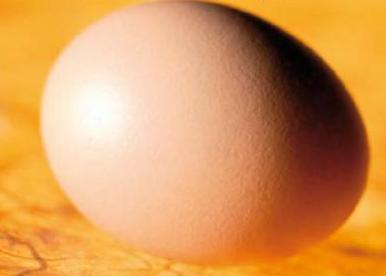Return of the good egg

In November 2008, the Turkish Branch of the World’s Poultry Science Association arranged a symposium on egg quality. Following challenges of the 1970s and 1980s, including cholesterol and Salmonella, new elements like the inclusion of selenium and the benefits of choline, lutein, folic acid are now being discussed. All of these efforts are aimed at improving the positioning of the egg in human nutrition.
By Dr Peter Hunton, Cambridge, ON Canada
Keynote speaker at the symposium was Dr Don McNamara from the US Egg Nutrition Centre in Washington DC. He reviewed the sad history of what he called a failed hypothesis, vis the alleged relationship between cholesterol in our diet and cholesterol in our bloodstream, and consequently, our risk of heart disease.
Although the original statements about cholesterol’s alleged bad effects on human health were made more than 25 years ago, it is only now that people are beginning to realise the negative effects that reducing consumption of eggs has produced.
Dr McNamara quoted the well-known American philosopher H.L. Mencken, who once said: “For every problem, there is a solution that is simple, neat and wrong”. So for many medical doctors faced with a patient who was overweight, under-exercised and with a high blood cholesterol level, it became easy to recommend that they reduce or cease egg consumption. Although unlikely to resolve the patients’ problems, it still more or less met the physicians’ pledge to “do no harm”. There is now more than enough evidence from animal studies, clinical trials and epidemiological studies to convince anyone that there is no statistical relationship between egg consumption and risk of heart disease.
Natural diets for animals
Dr McNamara described the difficulties and shortcomings of animal models. Herbivores such as rabbits (used in the original work quoted to demonstrate the effect of dietary cholesterol on blood cholesterol) are of little value, because in their natural diet they do not encounter cholesterol, and thus have no method of dealing with it. Work using carnivores such as dogs or rats, while of potentially greater value, is often invalidated because of the very high levels of cholesterol used. These are often so high as to overwhelm the animal’s natural control mechanism.
Epidemiological studies have perhaps provided the best data confirming the lack of association between consumption of eggs (or other cholesterol-containing foods) and the risk of heart or artery disease. Once data is corrected for patient age and other variables, it is clear that there is no connection. However, demonstrating this is only the first step. Informing the public and, more importantly, the medical and nutrition communities is more difficult, time-consuming and expensive. The next phase of the promotion of the “New Good Egg” is the emphasis on the aspects of egg nutrition that consumers deny themselves by restricting egg intake. These include the benefits of choline, lutein, folic acid and omega-3 fatty acids, all contained in normal eggs, and in greater quantities in some of the enriched eggs now on the market.
Selenium addition
Dr Peter Surai is a world traveller on behalf of Alltech, manufacturers of Sel-Plex™, which, when added to the diet of laying hens, increases their selenium content 3-5 fold. Enriched eggs contain 30-35μg of selenium. Such levels provide 20-30% of the supposed requirement of many people, although recommended levels vary in different countries. According to Dr Surai, inhabitants of many European and Asian countries are generally deficient in selenium because of local soil conditions. North Americans are less likely to be deficient. Selenium-enriched eggs are widely available today in many countries, including China and Russia, the populations of which are thought to be the most deficient. Dr Surai’s paper listed almost 50 brands of selenium-enriched eggs now marketed in at least 24 countries.
Vitamin recommendation
Another interesting paper was presented by Dr Gilbert Weber of DSM, not directly dealing with eggs, but with the nutrition of hens producing them. Dr Weber showed that many of the recommendations for vitamin nutrition of layers are based on research conducted at least 30 years ago. Since then, layers have become much more productive, and have reduced their feed consumption by 10-20%. All of the vitamins were discussed with respect to their function, and symptoms of deficiency.
Recommendations from the NRC (1994)were compared with current usage by DSM and other vitamin suppliers. Compared with the 1994 recommendations, vitamin A levels are now increased 3-fold, vitamin D310-fold, and other essential vitamins by multiples varying from double to 10-fold.All told, this symposium was an excellent advertisement for eggs, and an exciting look into the future of what many believe is already “nature’s perfect food”. Eggs can be incorporated into everyone’s diet – from babies being weaned from their mothers’ milk, to older people with limited appetite, but who still require protein for lean tissue maintenance.
World Poultry Vol. 25, No. 4, 2009













